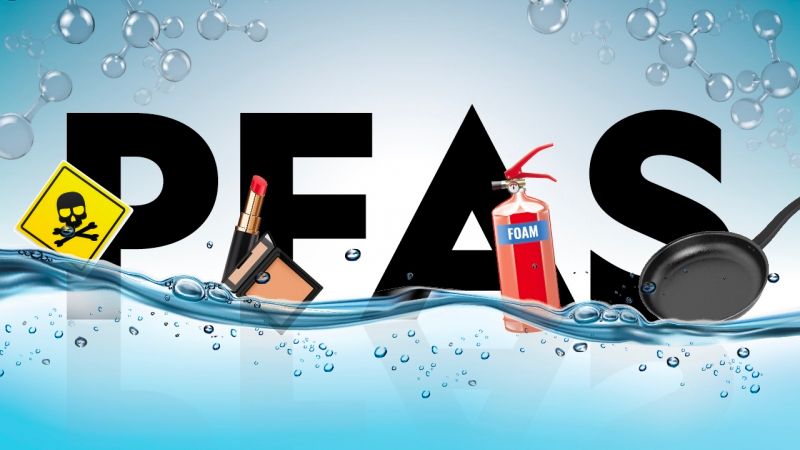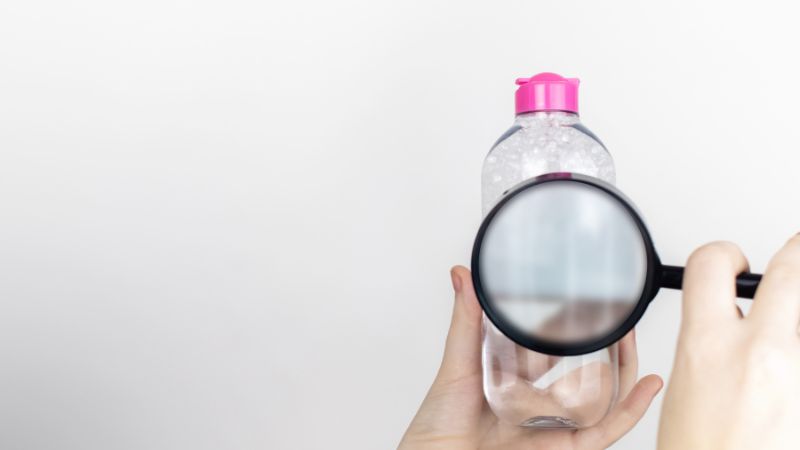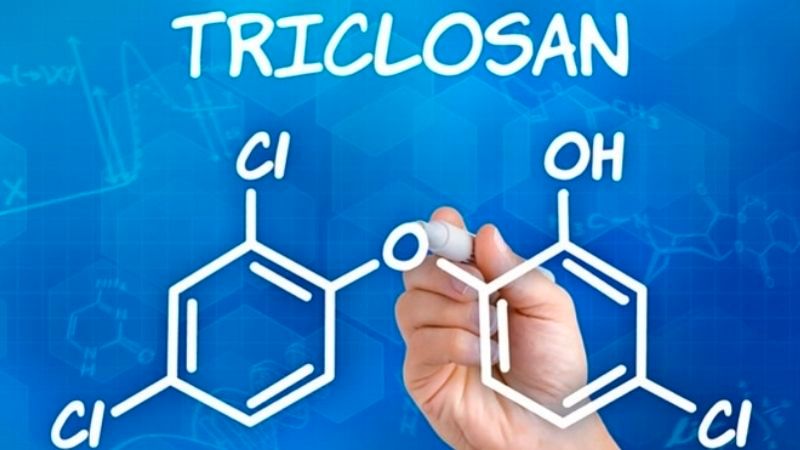All items around us contain some chemicals that can affect our health if exposed for a long period of time or due to the impact of transformation into toxic substances.
1 Perfluoroalkyl (PFAS)
Perfluoroalkyl (PFAS) is also known as a permanent chemical due to its slow degradation in the environment or in animal bodies.
Long-term exposure to this chemical can increase the risk of cancer, weight loss, immune system suppression, or thyroid-related issues.
PFAS is commonly found in different types of , water-resistant cosmetics such as foundation, lipsticks, mascaras, or household items, stain-resistant carpets. Moreover, PFAS is also found in polluted water sources.
Therefore, to minimize exposure to this chemical, it is recommended to choose pans, pots, plates made of cast iron, steel, ceramics, or stainless steel, or made of glass.
To reduce exposure to PFAS, you should use a water filter and regularly monitor water quality.
 Perfluoroalkyl (PFAS)
Perfluoroalkyl (PFAS)
2 Paraben
is a preservative commonly used in cosmetics, food, pharmaceuticals, and beverages, such as makeup, moisturizers, pills,…
Some studies have shown that high exposure to Paraben can cause significant health problems. However, low levels of Paraben can be quickly excreted. Nevertheless, it is still advisable to be cautious when using products containing Paraben!
 Paraben
Paraben
3 Formaldehyde
is a colorless, highly flammable substance found in many items such as, laminate flooring, cosmetics,…It can easily penetrate the body through inhalation, skin contact, or ingestion.
Exposure to a small amount of Formaldehyde is not harmful. However, prolonged exposure can cause respiratory, eye, nasal, throat, or skin problems.
To limit exposure to this chemical, you should remember the following:
- Formaldehyde is present in commonly used products such as , air fresheners, nail polish, ,…Therefore, it is advisable to prioritize products with natural ingredients.
- If you cannot avoid exposure, you should open windows for ventilation, use a fan, humidifier, or air conditioner.
 Formaldehyde
Formaldehyde
4 Bisphenol A (BPA)
is a chemical used to produce polycarbonate plastic, commonly found in medical devices, , plastic household items,…Thus, it can enter the human body through ingestion or inhalation.
Studies suggest a relationship between BPA and infertility, cancer, endocrine disorders. To minimize exposure to this chemical, you should:
- Avoid putting polycarbonate food containers in the microwave.
- Avoid consuming canned food.
- Prefer using glass, ceramic, stainless steel containers for hot food.
- Avoid using containers made of recycled plastic. According to this, containers with numbers 3 and 7 are made of recycled plastic, while plastics with numbers 1, 2, 4, 5 are safer.
 Bisphenol A (BPA)
Bisphenol A (BPA)
5 Phthalate
can easily be found in household cleaners, soaps, food packaging, perfume, shampoos, conditioners, nail polish,… Some studies suggest Phthalate can have adverse effects on health, such as birth defects or hormone disruption in rodents.
To minimize exposure to Phthalate is challenging, but to decrease it, you should choose products without PVC, limit the use of fragrant personal care or perfume products.
 Phthalate
Phthalate
6 Ether Glycol
Ether Glycol acts as a solvent to dissolve other substances, it is colorless and highly flammable. Ether Glycol is used in products such as paint, dye, perfume, cosmetics,…
Long-term exposure to Ether Glycol can lead to various health problems such as fatigue, anemia, kidney and liver damage, nausea, lung edema,…
 Ether Glycol
Ether Glycol
7 Dimethicone
is a type of silicone, commonly found in many cosmetics, it helps to smooth the skin and hair. Dimethicone is allowed by the FDA for use in cosmetics but has low biodegradability.
Therefore, Dimethicone is generally safe for human health at allowed levels, but it can have negative impacts on the environment.
 Dimethicone
Dimethicone
8 Triclosan
Triclosan is an antibacterial and antifungal agent found in some, cosmetics, , , toys, clothing,…but mostly through hand soaps.
Some animal studies have shown that exposure to this substance can cause hormonal disorders, immune disorders, and increased antibiotic-resistant bacteria.
 Triclosan
Triclosan
9 Ammonia
Ammonia is a colorless gas with a pungent smell, and it’s highly corrosive, causing nerve damage.
Ammonia is mainly used in the production of fertilizers, but it can also be found in plastic, dyes, textiles, or oven cleaners.
Exposure to high levels of Ammonia can lead to various effects like:
- Burning sensation in the respiratory system like the throat or nose if it is inhaled.
- Corrosion of the mouth, throat, or stomach if ingested.
- Skin and eye irritation if in contact.
 Ammonia
Ammonia
Above are 9 types of chemicals existing in household items that can be harmful to health if exposed too frequently. Hope this article provides useful information for you to know how to prevent them!
Source: Báo Phụ nữ Việt Nam



































